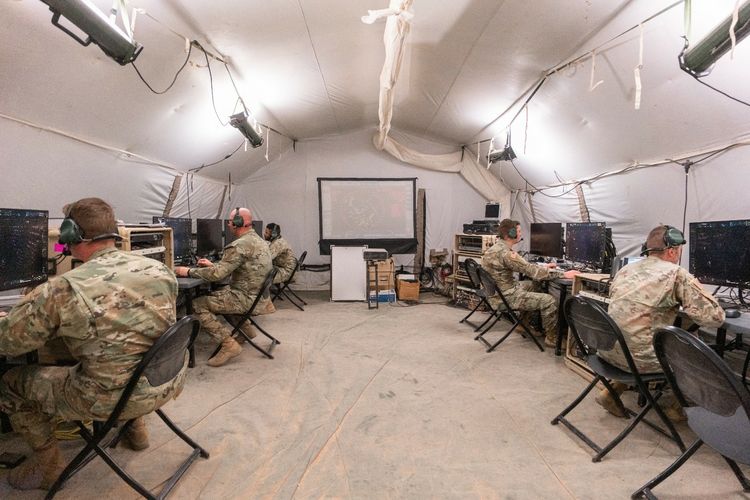INDIAN ARMED FORCES CHIEFS ON
OUR RELENTLESS AND FOCUSED PUBLISHING EFFORTS

SP Guide Publications puts forth a well compiled articulation of issues, pursuits and accomplishments of the Indian Army, over the years

I am confident that SP Guide Publications would continue to inform, inspire and influence.

My compliments to SP Guide Publications for informative and credible reportage on contemporary aerospace issues over the past six decades.
- Prime Minister witnesses 'Bharat Shakti' – a Tri-Services Firing and Manoeuvre Exercise in Pokhran, Rajasthan
- Interim Defence Budget 2024-25 — An Analysis
- Union Defence budget 2024
- Indian Army: In quest of greater firepower and policy recommendations for gaps
- Indian Army Annual Press Conference 2024
- 6G will transform military-industrial applications
Northrop Grumman's IBCS Ready for Fielding, Connecting the Battlespace

Northrop Grumman's Integrated Battle Command System (IBCS) completed the final, demanding assessment, during its recent Operational Test and Evaluation (IOT&E). Completion of IOT&E is the last major test event before the US Army makes the decision to move the program from low rate initial production to full rate production, allowing IBCS to be fielded around the world.
Beginning in January, at White Sands Missile Range (WSMR), New Mexico, IBCS began a series of operational flight tests. Throughout the 10-month period, soldiers operated IBCS in complex test environments encompassing a broad spectrum of attack and defense scenarios under realistic operating conditions, stressing the system as never before, and under intense scrutiny by US Army independent evaluators.
“Throughout IOT&E, we’ve shown how IBCS enables the warfighter to make more informed and faster decisions,” said Christine Harbison, vice president and general manager, combat systems and mission readiness, Northrop Grumman. “IBCS is ready for today’s threats and those of the future, making Joint All-Domain Command and Control (JADC2) a reality.”
Across two IO&TE flight tests at WSMR, IBCS detected, tracked, and intercept threats that included: a high speed, high performance tactical ballistic missile and two cruise missile surrogates during a stressing electronic attack.
Once fielded, IBCS will extend the battlespace beyond what a single sensor tied to a single effector can provide, allowing the use of a sensor or effector’s full range and enabling the warfighter to quickly see and act on data across the entire battlefield.
Northrop Grumman designed IBCS with a modular, open, and scalable system architecture that is foundational to integrating all available assets in the battlespace, regardless of source, service, or domain. Its architecture enables the efficient and affordable integration of current and future systems and extends the battlespace by disaggregating sensors and effectors. Through numerous successful tests and demonstrations, IBCS has validated the ability to connect and fuse multi-service sensor data to multi-service weapons, demonstrating JADC2 capabilities.





